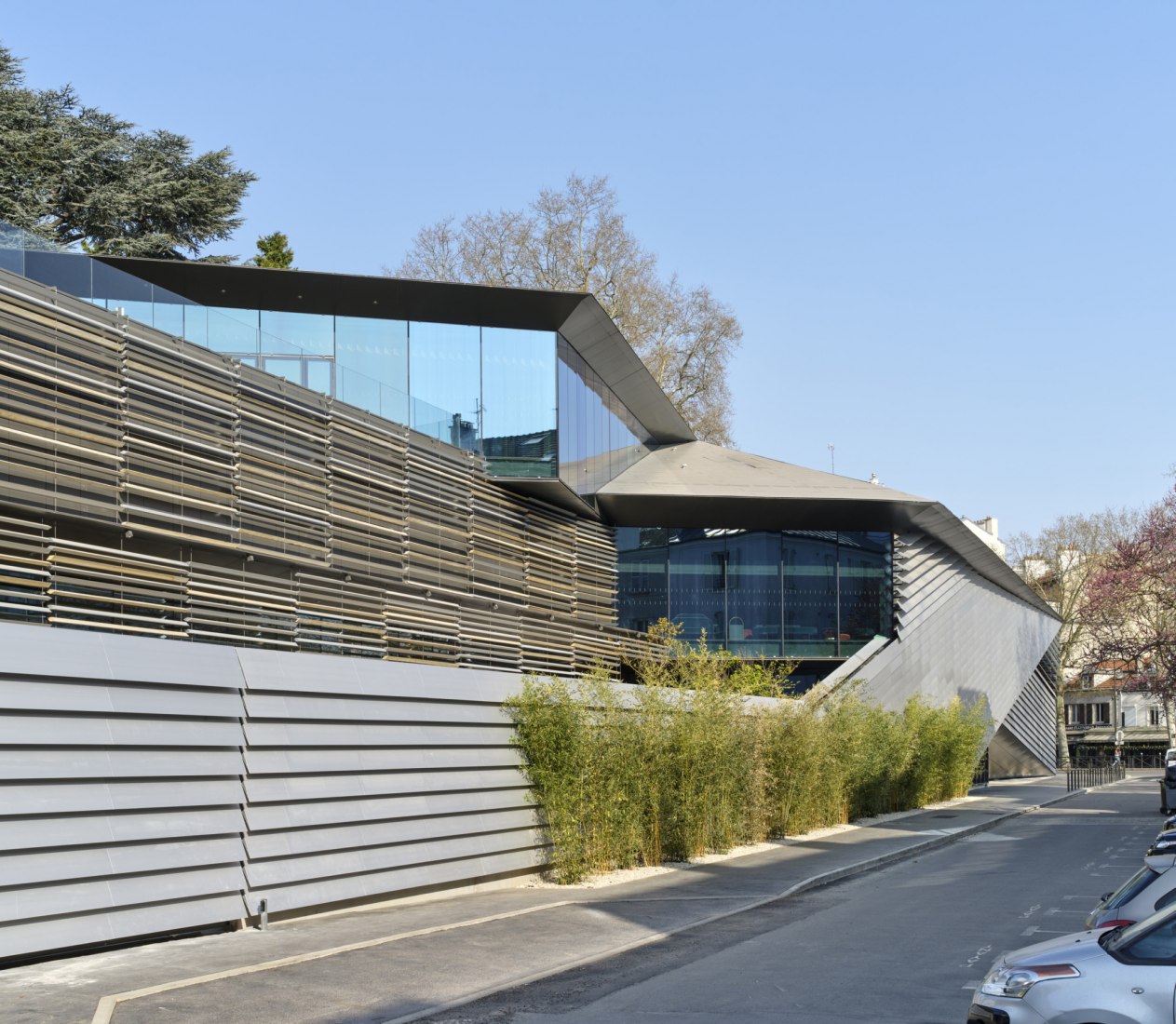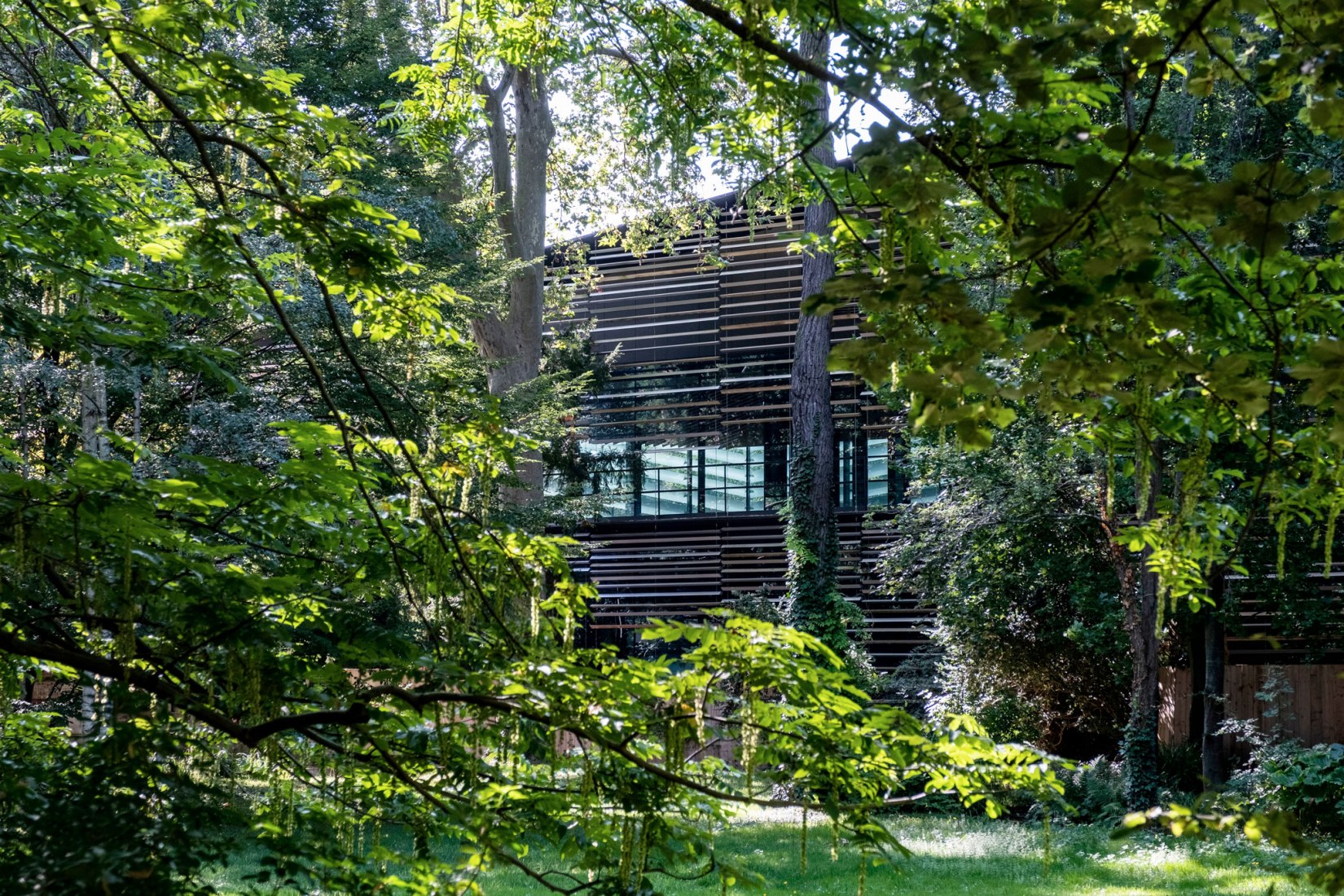Since 2015, the total area of the 4-hectare park, which includes the gardens and various buildings, such as the Albert Kahn house and the Archives du Planete, has been listed as Historical Monuments of France, all in charge of the "Département des Hauts-de-Seine", owner of the site since 1968.
Kahn had a special passion for Japan. Taking this as his starting point, Kuma drew inspiration for the new building from the engawa, a sort of porch or veranda typical of Japanese architecture.

Albert-Kahn departmental museum by Kengo Kuma. Photograph by Julia Brechler.
The new building is an elongated volume that acts as a border and filter between Rue du Port and the park, which, seen from the city, looks like a gigantic piece of origami, with its exterior façade clad in blades of aluminium through which the interiors can be intuited. While the garden side envelope is mainly made of wood, and sometimes these two materials are gradually mixed. This gives the building a biological skin that smoothly adapts to different environments while interacting with them.
In line with Japanese tradition, to prevent evil spirits from getting in, the entrance is not at the front: some flights of steps located under the galleries invite people to enter, going past a small Zen garden. It is the beginning of a journey that leads visitors to turn their backs on the city and enter a special space, to discover pictures and films of a lost world and the nature of a special garden. The dream of Albert Kahn of blending the garden and display space was achieved by blending the environment and architecture.

Albert-Kahn departmental museum by Kengo Kuma. Photograph by Michel Denance.

Albert-Kahn departmental museum by Kengo Kuma. Photograph by Michel Denance.
Project description by Kengo Kuma
Art museum is located on the south side of the Bois de Boulogne, a large public park on the western side of Paris.
This museum was founded by Albert Kahn (1840-1940), a trading merchant who recorded scenes from his travels around the world in 72,000 colour photographs and 183,000 meters of film. These archives consist of the central part of the collection. He was particularly interested in Japan and other regions in Asia, and his photographs which tell the story of life in Asia at the time have high historical and ethnic value.
Reproducing the gardens from the five continents of the world was a dream of Albert Kahn, and the Japanese garden in particular which was built by gardeners that he hired from Japan is a sight to see.

Albert-Kahn departmental museum by Kengo Kuma. Photograph by Michel Denance.
The display space was designed in an extended linear sequence from the paths through this garden. A screen made from aluminium and wood is inserted between the path and exterior environment while it continues to meander horizontally and vertically, controlling the relationship between the two. The dream of Albert Kahn of blending the garden and display space was achieved by blending the environment and architecture.
The envelope on the city side is mainly made from aluminium, and the envelope on the garden side is mainly made from wood, and at times these two materials are mixed in a gradational manner. This gives the building a biological skin that gently adapts to different environments while interacting with them.


































































